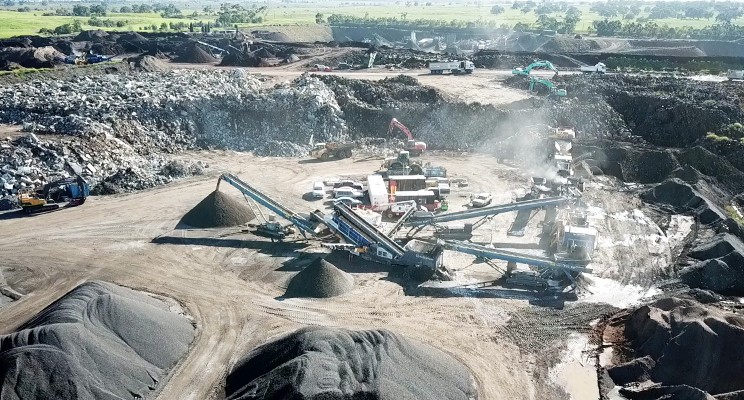
Did you know that Australians generate 67 million tonnes of waste annually*? That is the equivalent of 2.7 tonnes per person per year which is roughly the weight of an adult rhinoceros.
By 2051 the population of Melbourne is projected to increase by 77 per cent to 7.8 million. With this population growth comes a forecasted 63 per cent increase in waste volumes by 2042, a large portion of which will be sent to landfill**.
This waste not only stems from the construction and demolition industry but key sources of waste include the commercial and industrial sectors and households. In order to divert this waste from landfills, it is vital that sustainable solutions are created.
Preserving natural resources for future generations has been at the core of the work at Repurpose It since inception. The plant is designed to recover and receive 500,000 tonnes of waste generated through a range of construction projects, from road and rail infrastructure to tunnelling operations.
However, Australia’s waste problem extends far beyond C&D waste. Since Repurpose It opened in 2017 it has received a wider range of waste than anticipated, including more variety of contaminated soil, and has begun producing a broader range of materials – not just back into construction, but into landscaping and garden supply. To meet this need, the capabilities of the site have been extended to take on this variety of materials and refine them into high-value resources.
A new crushing plant
From July, Repurpose It will be operating two new plants – a blending and a crushing plant, giving the ability to diversify its services to reach both major infrastructure projects and the garden beds of Australian homes.
Currently under construction, the new blending plant will be able to take an increased variety of contaminated soil and infeed materials, and counteract the acid sulphate that is prominent in big infrastructure projects like the Metro Tunnel and North-East Link. It will add further variety to our existing processes, producing bespoke products to meet customer requirements in the civil and construction market. The new up and running crushing plant can take C&D waste, refining and processing it to create new high-value concrete, rock and aggregate products.
These new plants will convert what was previously untreatable materials that end up in landfill, into a range of high-quality resources such as asphalt, soil for landscaping, parks and gardens, pipe embedment and pavements, used not only for big-build construction but household projects also. The addition of these plants will also improve the recovery of waste on the site, allowing the minimisation of untreatable materials and improve the yield of resources converted from waste.
Looking to the future, Repurpose It will broaden their capabilities further, with a 2021 focus on taking commercial and household organic waste and converting it into renewable energy. Not only would this reduce the energy footprint, but it means Repurpose It operations will be 100 per cent off the grid.
Additionally, the expansion of the plant will give the ability to provide an integrated solution to customers. For many of these customers, sustainability targets are an integral part of their business strategy. With the capability to convert a greater range of materials into valuable resources, Repurpose It can help customers reduce their waste and facilitate the use of more repurposed materials.
*National Waste Report 2018
**Metropolitan Waste and Resource Recovery Group, 2018
